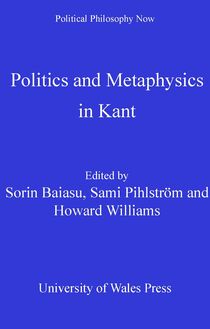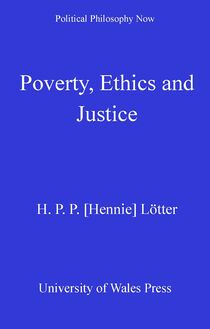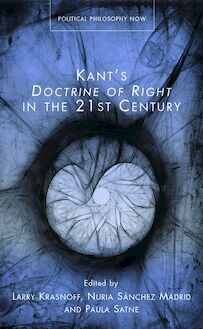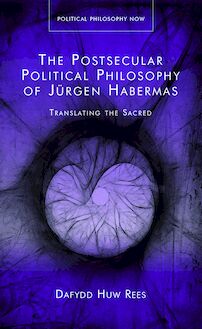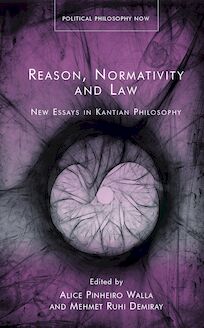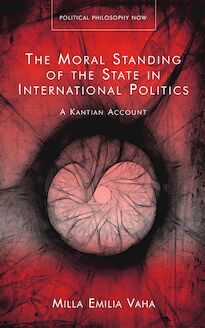-
 Univers
Univers
-
 Ebooks
Ebooks
-
 Livres audio
Livres audio
-
 Presse
Presse
-
 Podcasts
Podcasts
-
 BD
BD
-
 Documents
Documents
-
- Cours
- Révisions
- Ressources pédagogiques
- Sciences de l’éducation
- Manuels scolaires
- Langues
- Travaux de classe
- Annales de BEP
- Etudes supérieures
- Maternelle et primaire
- Fiches de lecture
- Orientation scolaire
- Méthodologie
- Corrigés de devoir
- Annales d’examens et concours
- Annales du bac
- Annales du brevet
- Rapports de stage
La lecture à portée de main
Vous pourrez modifier la taille du texte de cet ouvrage
Découvre YouScribe en t'inscrivant gratuitement
Je m'inscrisDécouvre YouScribe en t'inscrivant gratuitement
Je m'inscrisEn savoir plus
Vous pourrez modifier la taille du texte de cet ouvrage
En savoir plus

Description
Sujets
Informations
| Publié par | University of Wales Press |
| Date de parution | 15 juillet 2012 |
| Nombre de lectures | 0 |
| EAN13 | 9781783165254 |
| Langue | English |
Informations légales : prix de location à la page 0,1250€. Cette information est donnée uniquement à titre indicatif conformément à la législation en vigueur.
Extrait
POLITICAL PHILOSOPHY NOW
Chief Editor of the Series: Howard Williams, Aberystwyth University, Wales
Associate Editors: Wolfgang Kersting, University of Kiel, Germany Steven B. Smith, Yale University, USA Peter Nicholson, University of York, England Renato Cristi, Wilfrid Laurier University, Waterloo, Canada
Political Philosophy Now is a series which deals with authors, topics and periods in political philosophy from the perspective of their relevance to current debates. The series presents a spread of subjects and points of view from various traditions, which include European and New World debates in political philosophy.
POLITICAL PHILOSOPHY NOW
Kant on Sublimity and Morality
Joshua Rayman
UNIVERSITY OF WALES PRESS CARDIFF 2012
Joshua Rayman, 2012
All rights reserved. No part of this book may be reproduced in any material form (including photocopying or storing it in any medium by electronic means and whether or not transiently or incidentally to some other use of this publication) without the written permission of the copyright owner except in accordance with the provisions of the Copyright, Designs and Patents Act 1988. Applications for the copyright owner s written permission to reproduce any part of this publication should be addressed to the University of Wales Press, 10 Columbus Walk, Brigantine Place, Cardiff, CF10 4UP.
www.uwp.co.uk
British Library Cataloguing-in-Publication Data A catalogue record for this book is available from the British Library.
ISBN 978-0-7083-2125-6 eISBN 978-1-78316-525-4
The right of Joshua Rayman to be identified as author of this work has been asserted in accordance with sections 77, 78 and 79 of the Copyright, Designs and Patents Act 1988.
Contents
Acknowledgements
Abbreviations
Preface
Part I: Genealogy of the Kantian Sublime
1 Longinus and the Origins of the Sublimity-Morality Connection
2 Sublimity and Morality in Eighteenth-Century British Aesthetics
3 Kant s German Precursors
Part II: Kant on Sublimity and Morality
4 The Moral Functions of Sublimity in the Kantian System
5 Replies to Objections to Sublimity s Moral Functions
Part III: Sublimity and Morality in German Idealism and Recent Continental Philosophy
6 Post-Kantian Continental Work on Sublimity and Morality
I Sublimity and Morality in German Idealism
II Sublimity and Morality in Contemporary Continental Philosophy
Notes
Bibliography
Acknowledgements
In recognizing both finite and infinite debts to those without whom this book could not exist, I only postpone the inevitable default. My debts to Allison Moore, Isolde Rayman, Bill Rayman and Abby Wasserman are infinite and unmeasurable. To Andrew Cutrofello, I owe the original impetus for the project, which was hatched in his graduate seminar on Kant and Continental aesthetics, as well as continued advice and support, and a critical eye in reading the excised pr cis of the Analytic of the Sublime . I would also like to thank Craig Greenman and Erik Gardner for our many useful discussions of Kant, sublimity and morality. Finally, I would like to thank the series editor Howard Williams for suggesting that I expand an article submitted to Kantian Review into this book, the University of Wales Press commissioner Sarah Lewis for working with me to bring the book to press and anonymous reviewers at the University of Wales Press for helping me to sharpen my arguments, holding me to the original format of my proposal and assuring the accuracy of my translations and uses of secondary sources.
Abbreviations
Immanuel Kant: CPR Critique of Pure Reason CPrR Critical of Practical Reason CJ Critique of Judgment GMM Grounding for the Metaphysics of Morals MM Metaphysics of Morals OFBS Observations on the Feeling of the Beautiful and Sublime
Theodor Adorno: AT sthetische Theorie (German pagination) GS Gesammelte Schriften
G. W. F. Hegel: H. Hegel, sthetik (German pagination)
Longinus: L Longinus, On the Sublime
Preface
How such a synthetic practical proposition is possible a priori and why it is necessary are tasks whose solution does not lie any longer within the bounds of a metaphysics of morals. (Immanuel Kant, Grounding for the Metaphysics of Morals, Grundlegung zur Metaphysik der Sitten , GMM: Ak.445)
One of the more interesting questions in Kant s famous moral and epistemological works is what boundary conditions or horizons enable his moral and epistemological claims. What struck me in my first reading of Immanuel Kant s Analytic of the Sublime in 1997 was that it seemed to assign itself a crucial role in his morality. Yet, the extant scholarship either denied sublimity s positive role in morality or minimized it on grounds that the sublime is merely an aesthetic analogue of morality, and hence unable to serve any moral functions. The primary aim of this book is to argue against these readings of Kantian sublimity and morality by examining the work that morality does in the sublime and, conversely, the work the sublime does in morality. I show that the relationship between sublimity and morality is closer and more important than has been understood. The sublime fills an essential function in the moral project guiding Kant s critical works and it does so at times precisely in virtue of its being an aesthetic analogue to morality.
Historically, the sublime has been understood as the idea, concept or experience of what is great in magnitude, power, number, nobility or elevation. As I demonstrate in my genealogy of the sublime, moral readings of the sublime date back to the earliest extant text on the sublime, that of the second century CE writer Longinus. The European revival of Longinus in the late seventeenth and eighteenth centuries inspired work on the sublime by nearly every famous writer of the era. But Kant (1724-1804) is certainly the most systematic and influential of the thousands to have written on the sublime in the modern era. Kant broke the historical mold of rambling, unsystematic commentaries on the topic by offering a systematic framework for considering the sublime and, accordingly, his work is far more influential than that of any other writer on the sublime since Longinus. This is not to say that Kant was wholly or even largely original. Even in construing sublimity in moral terms, as he did in his main works on the sublime, Observations on the Feeling of the Beautiful and Sublime ( Beobachtungen ber das Gef hl des Sch nen und Erhabenen , OFBS, 1764) and the Analytic of the Sublime in the Critique of Judgment ( Kritik der Urteilskraft , third Critique , CJ, 1790), Kant was only following a long line of similar writers. His examples and descriptions of sublimity and its relation to morality borrow heavily from the aesthetic tradition dating back to Longinus. However, James Kirwan exaggerates greatly in saying that, with one significant exception, Kant s description of the range of the sublime, and even his grounding of it, represent no advance on the writings of his predecessors in the field (Kirwan 2005: 53), that Kant s text inaugurates nothing (Kirwan 2004: 4) and that Kant did much less to set subsequent debates on aesthetics, which, Kirwan alleges, are dominated by Hegelian, rather than Kantian readings, than to end eighteenth-century debates to which his work belongs (ibid.: 1-2). Against Kirwan, I will argue that Kantian sublimity differs from the tradition both formally and in its systematic moral functions, that no previous account of sublimity is associated with a morality of the Kantian style and that the Kantian sublime has been immensely influential. I agree with Paul Guyer that Kant s interpretation of both the beautiful and sublime differed from what was commonplace (Guyer 1993: 254), but I would like to ascribe the main difference in Kant s interpretation of the sublime, and hence the source of his importance and originality, to his systematic framework and transcendental methodology, as in his epistemology, not to the details of his claims. By incorporating the sublime within the epistemological, ethical, aesthetic and teleological structures of his critical system, Kant adds something new and profound to empiricist and rationalist debates concerning sublimity. However, in associating the originality of Kantian sublimity with its moral functions, I do not accept Kirwan s thesis that Kantian sublimity s novelty consists in its substitution of a genuinely moral import [for] the commonly felt moral import of the experience of sublimity , which Kirwan describes as of the greatest significance to the history not only of the sublime but also of aesthetics in general (Kirwan 2005: 53). Kantian morality is in my view significantly more justifiable than the casual virtue ethics and utilitarianism of previous eighteenth-century accounts of sublimity, yet Kirwan begs the question as to what constitutes genuine moral import, feeling, as in these accounts, or reason, as in the Kantian account. For the former, what is commonly felt as morally significant is eo ipso morally significant. Kantian sublimity s moral innovation consists not in adding genuine moral meaning, but in systematizing traditional accounts of the sublime by reference to transcendental reflective judgements and a synthetic a priori morality. This systematic turn transforms the debate in many ways, not the least of which are the introduction of justificatory and explanatory standards to a largely uncritical, descriptive set of discourses and the enforcement of greater consistency and interconnection with moral and epistemological questions.
Kant is by many criteria the most influential philosopher of the past three centuries, at least on other philosophers, as evidenced by the fact that as of April 2011 there are 17,166 references to Kant in the Philosopher s Index , four thousand more than Aristotle, six thousand more than Plato and seven thousand more than Hegel or Heidegger; and far more American Philosophical Association pa
-
 Univers
Univers
-
 Ebooks
Ebooks
-
 Livres audio
Livres audio
-
 Presse
Presse
-
 Podcasts
Podcasts
-
 BD
BD
-
 Documents
Documents
-
Jeunesse
-
Littérature
-
Ressources professionnelles
-
Santé et bien-être
-
Savoirs
-
Education
-
Loisirs et hobbies
-
Art, musique et cinéma
-
Actualité et débat de société
-
Jeunesse
-
Littérature
-
Ressources professionnelles
-
Santé et bien-être
-
Savoirs
-
Education
-
Loisirs et hobbies
-
Art, musique et cinéma
-
Actualité et débat de société
-
Actualités
-
Lifestyle
-
Presse jeunesse
-
Presse professionnelle
-
Pratique
-
Presse sportive
-
Presse internationale
-
Culture & Médias
-
Action et Aventures
-
Science-fiction et Fantasy
-
Société
-
Jeunesse
-
Littérature
-
Ressources professionnelles
-
Santé et bien-être
-
Savoirs
-
Education
-
Loisirs et hobbies
-
Art, musique et cinéma
-
Actualité et débat de société
- Cours
- Révisions
- Ressources pédagogiques
- Sciences de l’éducation
- Manuels scolaires
- Langues
- Travaux de classe
- Annales de BEP
- Etudes supérieures
- Maternelle et primaire
- Fiches de lecture
- Orientation scolaire
- Méthodologie
- Corrigés de devoir
- Annales d’examens et concours
- Annales du bac
- Annales du brevet
- Rapports de stage



